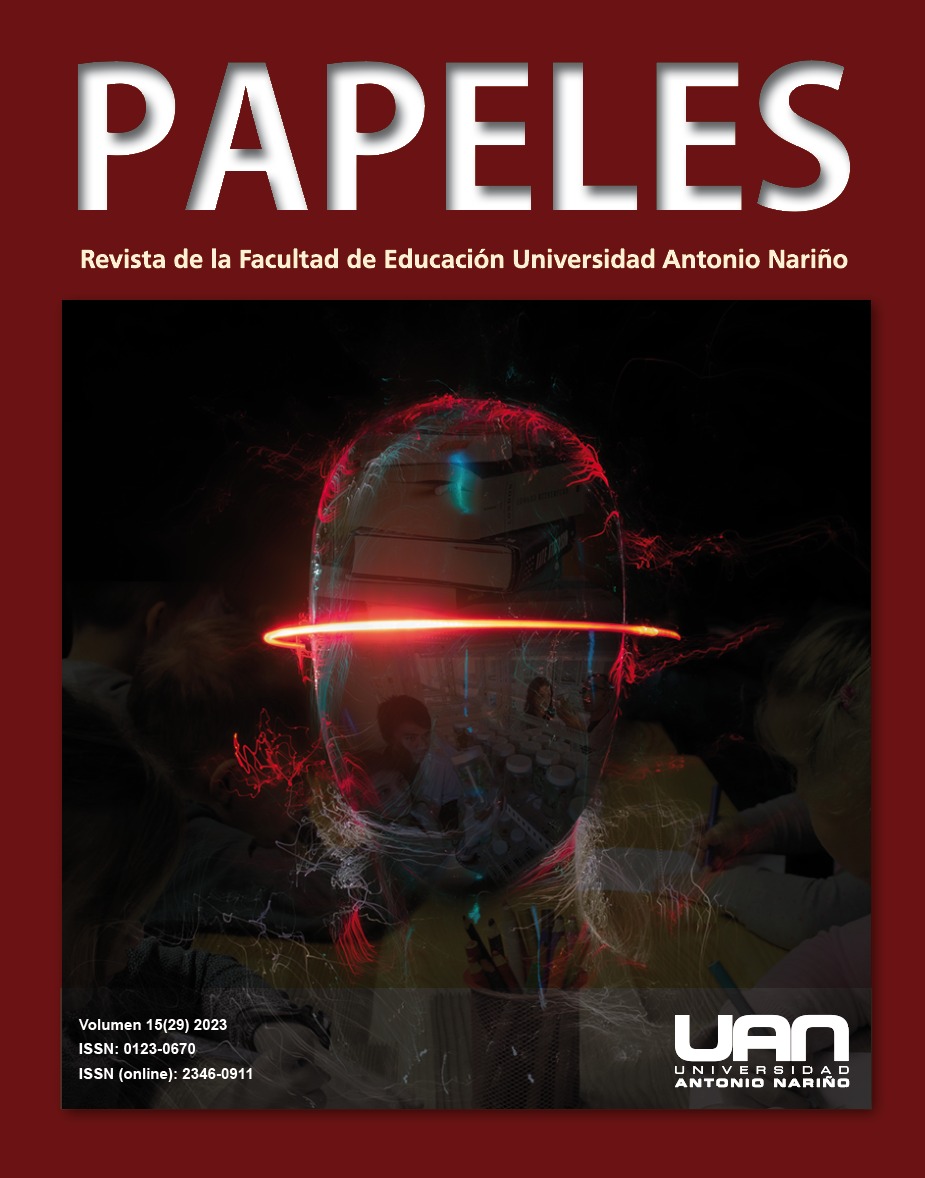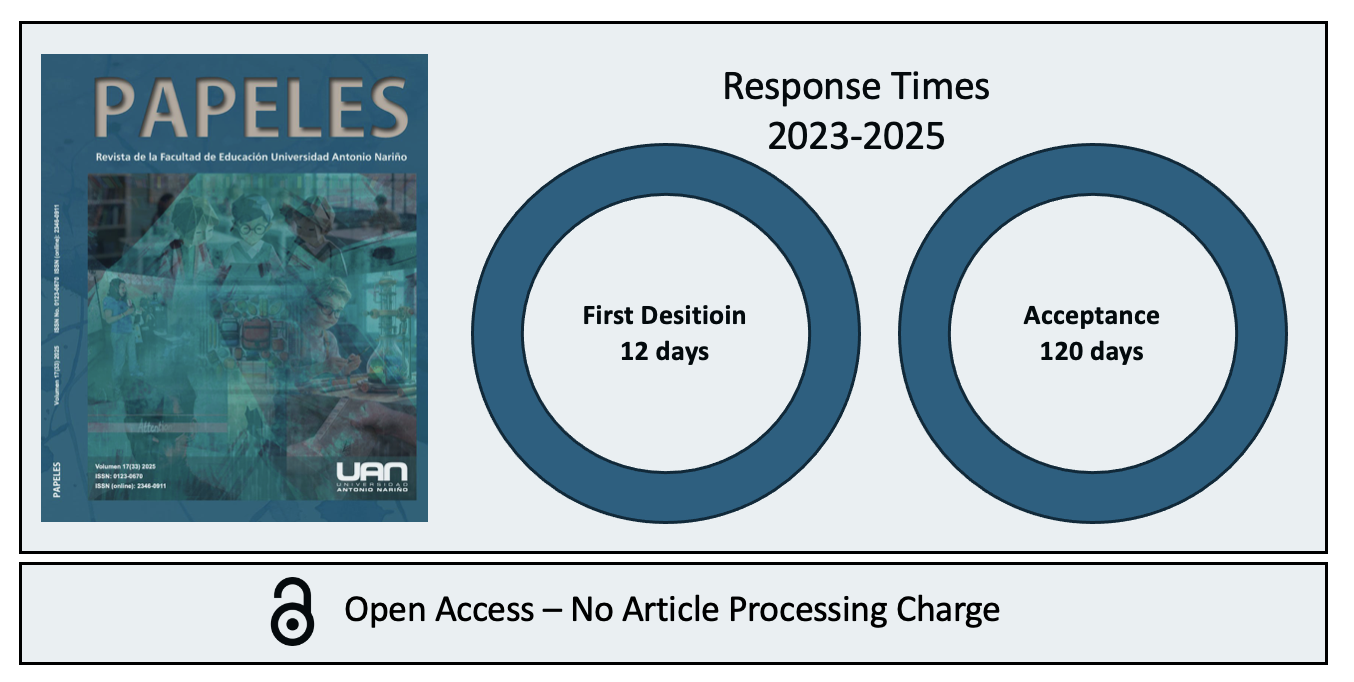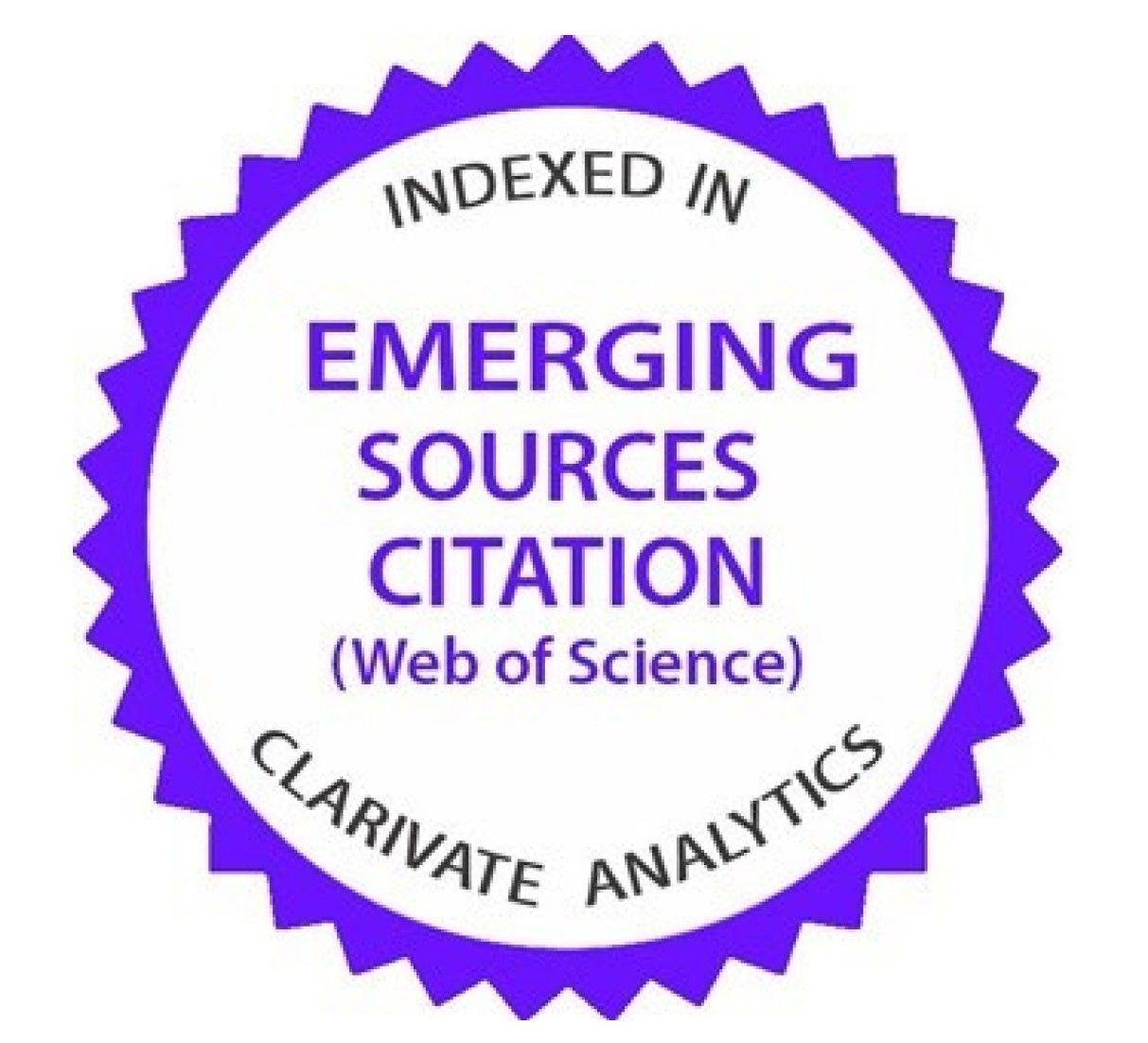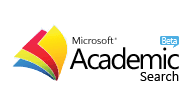Educational Inclusion in High School: Analysis of Thirteen Investigations Published in Electronic Journals from 2012 to 2022
Inclusión educativa en bachillerato: análisis de trece investigaciones publicadas en revistas electrónicas de 2012 a 2022
DOI:
https://doi.org/10.54104/papeles.v15n29.1303Keywords:
Educational inclusion, High school, barriers to learning, tutorial, education technologyAbstract
Introduction: The question that guides this work is what are the main categories that are identified in the articles published on educational inclusion in high school from 2012 to 2022 and what are the most outstanding characteristics of the research? For this reason, the objective of this work is to analyze the main categories and characteristics of research on educational inclusion at the high school level published in electronic journals from 2012 to 2022. Methodology: The research approach is qualitative, with a descriptive scope and documentary analysis. In the search engines, the words educational inclusion, high school and the name of two databases were placed: Redalyc and SciELO. Only investigations that included both aspects were chosen. Results and discussion: In total there are thirteen investigations that are analyzed. We proceeded to review each of the articles and to place the main data in a concentrate. Afterwards, the words that are related to educational inclusion were identified, among which the following stand out: democracy, decision-making, Special Educational Needs (SEN) from a broad vision; political, personal and educational barriers; learning barrier and people with disabilities. In addition, the categories related to options to enable educational inclusion are: programs, actions, technology and flexibility; educational practice and teacher training. Conclusions: It is concluded that although research on educational inclusion and high school is scarce; the one that exists provides elements to improve practices at that level and allow quality education for all. Although there are various barriers; there are also possibilities to innovate.
Downloads
References
Aguado Odina, M. T. y Ballesteros Velázquez, B. (2012). Equidad y diversidad en la educación obligatoria. Revista de Educación, 358, 12-16. https://redined.educacion.gob.es/xmlui/bitstream/handle/11162/92375/00820123000185.pdf?sequence=1&isAllowed=y
Darretxe Urrutxi, L., Goikoetxea Piédrola, J. y Fernández González, A. (2013). Análisis de prácticas inclusivas y exclusoras en dos centros educativos del País Vasco. Actualidades Investigativas en Educación, 13(2), 105-134. https://www.scielo.sa.cr/pdf/aie/v13n2/a05v13n2.pdf
De la Cruz Flores, G. y Matus Ortega, D. I. (2017). Participación escolar e inclusión educativa: Un estudio de caso de experiencias con estudiantes de secundaria alta. Education Policy Analysis Archives, 25, 102-102. http://dx.doi.org/10.14507/epaa.25.2979
De la Cruz Orozco, I. (2020). Educación inclusiva en el nivel medio-superior: Análisis desde la perspectiva de directores. Sinéctica, 54, 1-15. https://doi.org/10.31391/S2007-7033(2020)0054-008
Delgado Cruz, Y. y Cisneros-Cohernour, E. J. (2017). Contribución al desarrollo social del bachillerato en línea como estrategia de acceso a la educación media superior. Revista Latinoamericana de Educación Inclusiva, 11(2), 141-161. http://dx.doi.org/10.4067/S0718-73782017000200010
Delgado-Ramírez, J. C., Valarezo-Castro, J. W., Acosta-Yela, M. T. y Samaniego-Ocampo, R. de L. (2021). Educación inclusiva y TIC: Tecnologías de apoyo para personas con discapacidad sensorial. Revista Tecnológica-Educativa Docentes 2.0, 11(1), 146-153. https://doi.org/10.37843/rted.v11i1.204
Echeita, G., Sandoval, M. y Simon, C. (2016). Notas para una pedagogía inclusiva en las aulas [ponencia]. IV Congreso Iberoamericano sobre el síndrome de Down, Salamanca, España. http://cddown-inico.usal.es/docs/045.pdf
Elvira Cruz, C. A., Méndez Pineda, J. M. y Auces Flores, M. del R. (2017). Prácticas docentes inclusivas en el nivel superior [ponencia]. XIV Congreso Nacional de Investigación Educativa, San Luis Potosí, México. https://www.comie.org.mx/congreso/memoriaelectronica/v14/doc/1144.pdf
Espinoza, L., Hernández, K. y Ledezma, D. (2020). Prácticas inclusivas del profesorado en aulas de escuelas chilenas: Un estudio comparativo. Estudios Pedagógicos, 46(1), 183-201. http://dx.doi.org/10.4067/S0718-07052020000100183
García García, M., García Corona, D., Biencinto López, C. M. y Asensio Muñoz, I. I. (2012). Medidas eficaces en atención a la diversidad cultural desde una perspectiva inclusiva. Revista de Educación, 358, 258-281. https://redined.educacion.gob.es/xmlui/bitstream/handle/11162/92390/00820123000197.pdf?sequence=1&isAllowed=y
Hernández Sampieri, R., Fernández Collado, C. y Baptista Lucio, P. (2010). Metodología de la investigación (5.ª ed.). McGraw Hill.
Navarro, M. J. (2015). Análisis de la inclusión educativa desde la perspectiva del profesorado de educación infantil, primaria, secundaria y bachillerato en el contexto español. Investigación y Postgrado, 30(1), 33-55. http://ve.scielo.org/pdf/ip/v30n1/art03.pdf
Peña Vera, T. y Pirela Morillo, J. (2007). La complejidad del análisis documental. Información, Cultura y Sociedad, 16, 55-81. https://www.redalyc.org/pdf/2630/263019682004.pdf
Pineda-Castillo, K. A. y Ruiz-Espinoza, F. H. (2021). Experiencias educativas con la tutoría par en el bachillerato: Reflexiones sobre la contingencia sanitaria covid-19. Journal of Negative and No Positive Results, 6(12), 1408-1426. https://doi.org/10.19230/jonnpr.4023
Riofrio-Villamar, N., Farro-Acosta, J. y Prieto-López, Y. (2021). Una mirada hacia la educación inclusiva de calidad mediante el uso adecuado de herramientas tecnológicas en la institución Simón Bolívar. Digital Publisher, 7(1-1), 288-302. https://doi.org/10.33386/593dp.2022.1-1.1032
Romero Gaona, C. y Piña González, G. A. (2020). Programa de inclusión educativa y social. Presencia Universitaria, 15, 101-107. https://doi.org/10.29105/pu8.15-9
Sevilla Santo, D. E., Martín Pavón, M. J. y Jenaro Río, C. (2018). Actitud del docente hacia la educación inclusiva y hacia los estudiantes con necesidades educativas especiales. Innovación Educativa, 18(78), 115-141. https://www.scielo.org.mx/pdf/ie/v18n78/1665-2673-ie-18-78-115.pdf
Uzcátegui Montes, K., Cabrera de los Santos Finalé, B. y Lami, P. (2012). La educación inclusiva: Una vía para la integración. Diversitas: Perspectivas en Psicología, 8(1), 139-150. https://doi.org/10.15332/s1794-9998.2012.0001.09
Vilchis Romero, V. y Arriaga Ornelas, J. L. (2018). Vivir y enfrentar la integración/exclusión educativa en el nivel medio superior: Estudios de caso en jóvenes de San Luis Potosí, México. Revista Educación, 42(1), 69-86. https://doi.org/10.15517/revedu.v42i1.23249
Zapata-Rivera, R. I., López-Estrada, J. y Rivera-Obregón, M. (2015). La inclusión educativa: Una mirada desde los docentes-tutores del bachillerato universitario. Retos y desafíos. Ra Ximhai, 11(4), 355-367. https://www.redalyc.org/pdf/461/46142596026.pdf
Downloads
Published
-
Abstract1085
-
PDF (Español)533
How to Cite
Issue
Section
Categories
License
Copyright (c) 2022 Ana Isabel Montoya González, Alfonso Vásquez Atochero

This work is licensed under a Creative Commons Attribution-NoDerivatives 4.0 International License.






